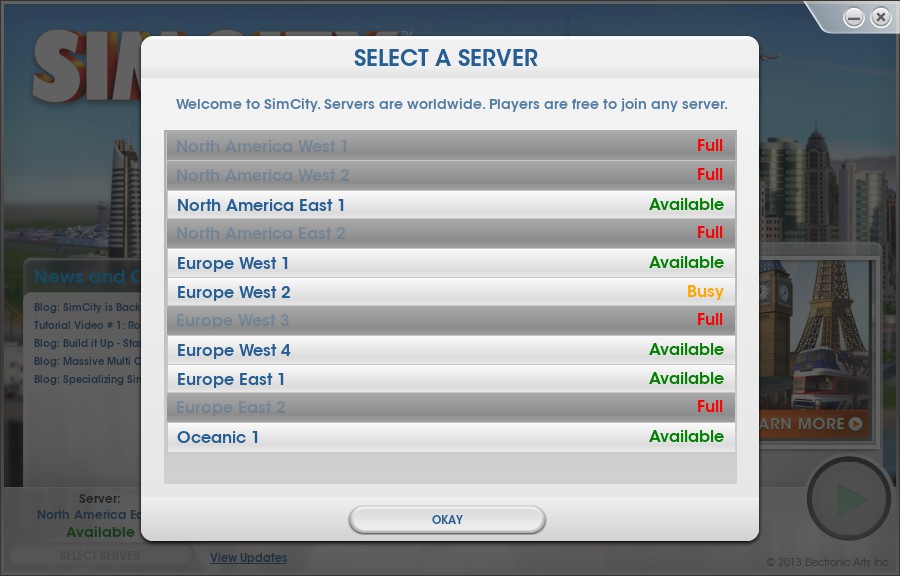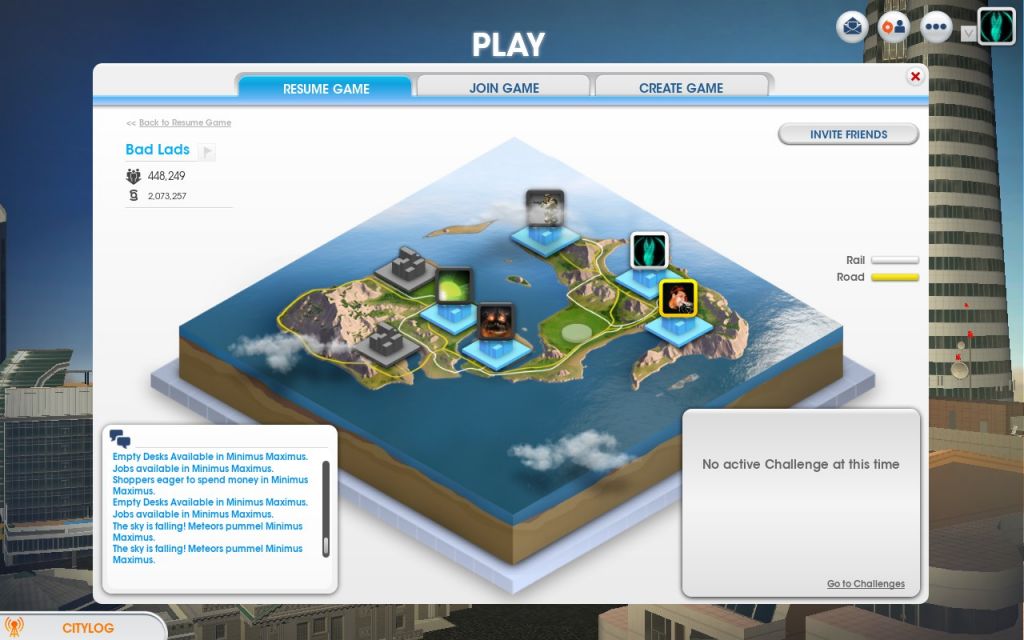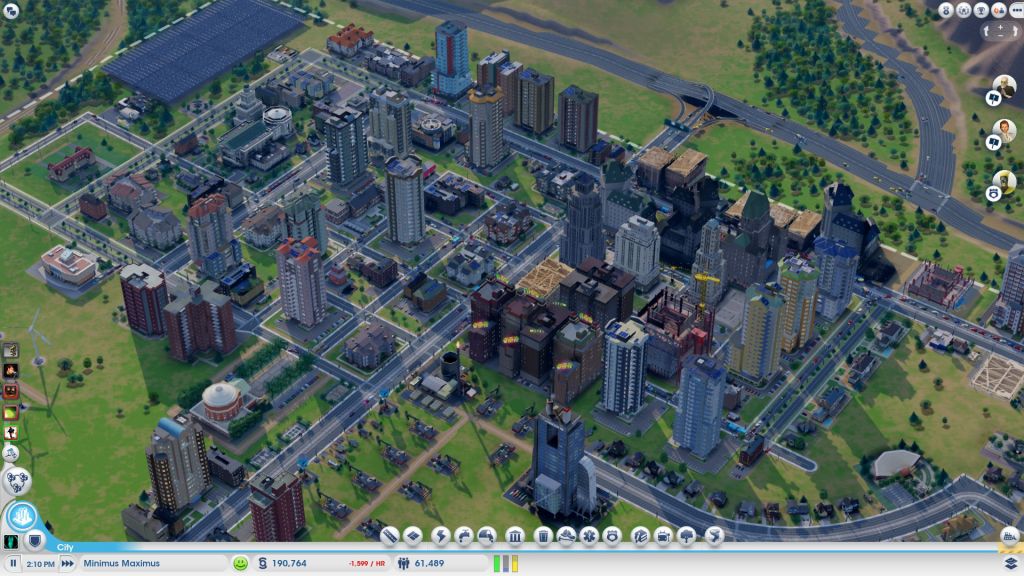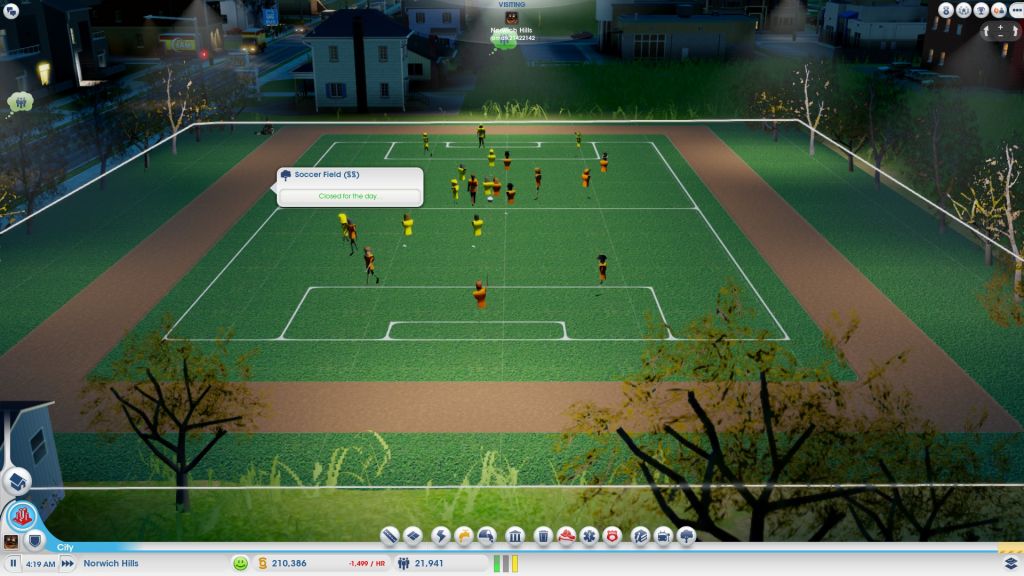Publisher: Electronic Arts
Developer: Maxis
Medium: Digital Download
Players: 1-16
Online: Co-op
ESRB: E10+ – Everyone 10+
Nobody is happy about what SimCity went through this year. Fans awaiting the return of a beloved franchise are upset with its new direction, and I can’t imagine that anyone publishing or developing the game was in a good mood for the launch week. We had some early impressions of the game, but after spending a substantial time with SimCity in its natural environment can we deliver a comprehensive review of a 90’s series return to the throne of city simulation.

The launch was a lot like when your long-lost friend from high school says they’re coming into town for the first time in years. Since they explicitly promised to arrive at the top of the hour, you even took time to make up the guest room and fix a dinner to welcome them that evening. It’s past midnight, and eventually you go to bed. When they do show up, they need gas money, and have to leave every 15 minutes to make a call on their phone or something that’s getting poor reception. You’re having breakfast alone, but at least they finally arrived and the visit is still really important to you… if only they’d stick around for more than a half hour at a time.
When you do get a word in, they aren’t interested in reminiscing. Instead the conversation seems to be stuck on all the changes they’ve made in their life; they’re more modern now, and heavily invested into online communities which is where they think their voice really is. Some of these ideas make sense to you, but you can’t help but wonder why the person you grew up with was so dissatisfied with their more personal nature. Sure, you’ve both grown, but you liked them for who they were when you were younger– in a simpler, more isometric time. Now that they want you to hang out with all their friends, your experiences with them are shorter and smaller. The only way to feed your nostalgia is to spread out all your old cornerstones between these people, so you can try to amalgamate a fuller experience with these smaller bite-sized social interactions.
After having to add a fourth friend to the social site you were dragged into, just to spend a little time at the water park with the strange vision of your high school chum, you hear the sound of the other shoe dropping. The signal in your area isn’t good enough and they have to step out again, only this time they forgot everything that happened the day before, and you’ll have to wait a few hours before they’re available again.
At least they’re so popular that people just don’t want to stop hanging out with them.
I guess we should have expected the launch to be a little rough, but at times the game was broken on fundamental levels that just didn’t feel fair to be evaluating SimCity on. Levels like whether you could even connect and play something, or the fact that saves are handled server-side, whereupon city data and player progression could disappear under the right circumstances of being dealt with remotely. At a certain point you have to assume that online stability will be fixed and that the game’s systems will eventually function fine, a point which for me turned out to be where booting it up presented a screen that the game, or region, or city, or anything was once again unavailable.
Connection issues aside, there is a functioning, compelling product underneath the ill-fitted networking container that houses SimCity. Maxis has seemingly torn UI and usability pages from every installment of The Sims since 2, henceforth creating an environment that is simple to navigate and always communicating to the player a current task at hand. These range from errands such as placing a fire department to prevent unhappiness, death, and sometimes fires, to climbing necessary stepping stones such as these with a long term goal in mind like affording that stadium you always wanted. On the surface, there’s always something to do in SimCity, and the sense of accomplishment is rich throughout.
The surface is also what you saw at the bookstore when you were checking out that hot barista who was a total basket case once they opened their mouth. The one who was also already in a relationship with the manager.
SimCity is not that, but it eventually raises more questions than it will provide answers for– some of which are disconcerting enough to hamper any ambition past a certain amount of hours once the game’s limits are realized. This begins with SimCity’s new take on scope, whereupon the massive individual cities from series’ past have been replaced with smaller, more restricted cities that are connected to each other in a preface region. This predefined city space is apparently an engine limitation, however it could just as easily be complimented by the game’s social and cooperative hooks.
Since cities are small enough that they will need to be co-dependent on others in the region, SimCity removes what was to me a core element of city simulation– the empowerment of doing it all on your own. While I can appreciate the ambition that Maxis has put forth, I don’t understand why the game can’t have an offline option, or at least something where the Glassbox engine could scale to larger city plots based on PC specs. The closest experience anyone hoping to have to a past SimCity installment is to create a private region and play every town on their own, which is surprisingly not fun. It’s difficult to care about several cities and not look at empty spaces in a region as resource pools when just one city requires the amount of attention that one four sizes larger than it should be asking for. The next best thing of course, is to just play privately with friends.
This seems contrary to Maxis’ goal of putting players in a cooperative environment where working together with strangers is a good thing, but it’s also the only way to fully realize the experience that the team was hoping to achieve. Part of the issue stems from a lack of ownership and moderation in regions, since no matter who establishes a region, they will have no extra privileges outside of first choice in the city they want and whether they limited the privacy. This creates an environment where strangers can screw over everyone else dependent on their city resources when they lose interest without abandoning the city so it can be reclaimed. It’s happens more than it should.
But wait, there’s more. While abandoning a city is the proper way to leave your toys behind so someone else can play with them, that doesn’t solve the problem of DLC.
Within a few hours of playing, I was remiss to find that my open region had two of seven cities that were abandoned, and when attempting to play them found I was locked out because of content belonging to the creator that I didn’t have. Without even specifying what it was that I didn’t own, the game had made up its mind that nobody could play useless they were part for this exclusive race of players who have probably a bonus pizza shop skin for preordering or something, which nullified over 25% of a region which will never realize its full potential until one of these hidden players discovers there are abandoned cities to play. They likely wouldn’t even know they saved the day, and since there’s no way to roll back any city to a previous state after DLC touches it, these regions will always be crippled. It’s a lot like the worst case scenario of DLC fragmenting a fighting game, except it affects as many people as possible instead of just one person.
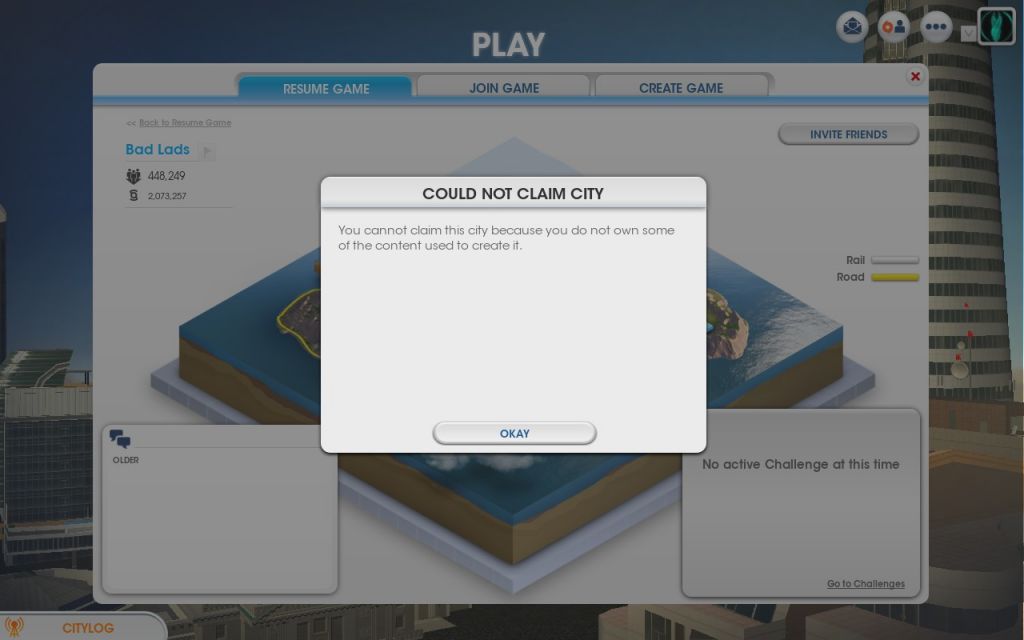
With no way of highlighting cities like this to players with corresponding DLC, or of reaching out to those who could help out, there isn’t even an attempt to make this splintering function past breaking the game before you even enter a city.
On the plus side, regions are hand-crafted in such a way that players can all contribute in a meaningful way to the community. This sense of level design communicates a level of foresight and intelligence that diligent players could utilize in order to master a region, reaching its full potential.
As someone with a history of happily observing the SimCity franchise, and never feeling competent enough to play along, SimCity has done a lot to make itself more user friendly. Roads now automatically act as delivery systems for electricity and water, and there are a satisfying amount of assistant toggles to snap roads and buildings efficiently so that you don’t end up bulldozing half of your town in order to bargain with precious square footage in the later stages of a city.
Another delight was the incorporation of real time chart overlays and map views, which are paramount when planning how your city will be laid out. Placing industrial zoning, garbage, or sewage over the primary source of water can pollute the area and sicken everyone if overlooked, for instance. A small infographic bit about resource allocation is even available when hovering over a city before choosing one to claim in its region, to support the planning phase. This drives home a message of being environmentally conscious that ends on a grave note for as much as I can tell, since before managing to fully realize most cities I was running into an issue where I would regularly run out of water with somehow none available from other cities in the region to buy from.
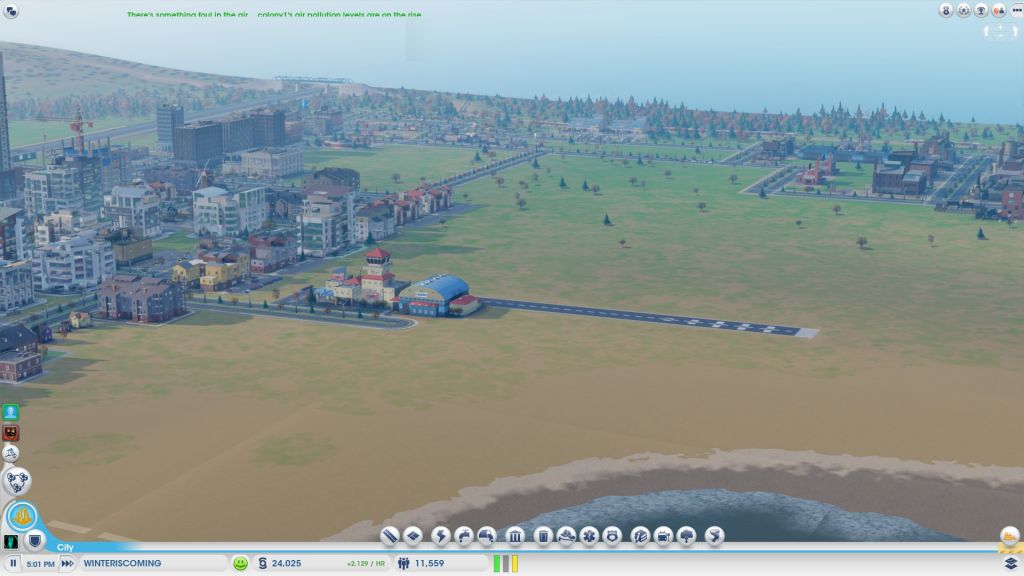
This sort of resource management is critical, and sharing or specializing in resources for other cities will make or break your experience. If one city is housing a nuclear reactor, that should free up space in all other cities for other types of buildings, like water pumps, police, education, or healthcare to service the region. On paper it’s a very beautiful sentiment; one which is restrained by the game asking players to comply with their city’s resources, rather than allowing them to explore or experiment with the game’s systems. This, compounded with the current level of cooperation required to maintain a city that doesn’t break after a certain point makes for a game that isn’t fun for the long run. For those who enjoy setting up cities and letting them loose, I suppose there’s a lot to get out of creating healthy properties and abandoning them for those who don’t want to put in time making a city that isn’t on fire or broke.
On the most intimate level of managing one’s city, however, the game is at its most entertaining. Citizens will request permission for special events like a fireworks show, and reward the player with a sum of money if the goal is met within the time limit. Certain buildings can schedule events as well, and the town hall will usually have one or more protests requesting a new institution or call to action for the betterment of the player’s approval rating.

The joy of simulation games for me has always been when I can achieve a point where I can sit back and let the place run independently, which is well in place with SimCity. Granted, resources are always temporary, and rarely will the town go without an advisor notifying you that their aspect of the town can be improved, but there are points where the game lets players relax and enjoy their creation– usually at a time where finances are in the green and we’re just waiting for enough money to build something that costs several thousand Simoleons an hour to run.
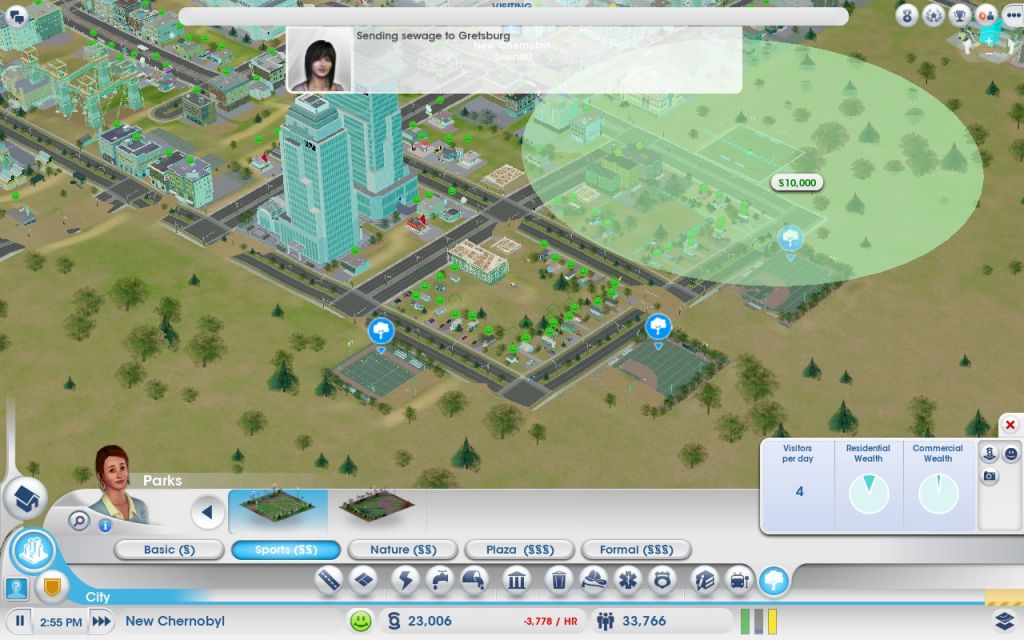
I also don’t fully understand why cities demand density, but can only max out with the widest type of roads. SimCity is a reflection of current-day landscaping, districting, and natural resource solutions, but if doesn’t offer real-world solutions such as city bikes, or high rises that are built in four-lane roads. The goal becomes to min/max a city’s resources on the most efficient grid, with low-mid-high levels of residential, commercial, and industrial districts; however, there is no consideration for expensive beach houses, low-cost commuter options such as carpool lanes or bikes, and worst of all the idea that all three lasses of each type of districting should be pleased. Nobody wants to have a city that’s great at being low class all-around, and citizens will constantly demand something nicer.
The motivations of the game’s citizens seem to work against player goals, and residents will almost always be insatiable for one reason or another. Why finally give players curved roads if the payoff for an organic look is that they waste space? Whether or not that’s how things go in the real world, I do know that San Francisco doesn’t cease to exist just because a server in Boston is inactive somewhere.
These constant needs having to be met manage to glue players to the screen quite well, although the realization that the game is built to break itself just to maintain a level of player interest and interaction doesn’t whet my appetite. In fact, it’s a little gross to think that there’s little to achieve in actually spending a meaningful amount of time in one city. My impression is that cities will last long enough to run out of resources and maybe build a great work in the right kind of region, but will need to be bulldozed soon after due to a lack of resources or things to do. At that point, the goal is to do that all again.
All this said, SimCity managed to keep my attention for an effortless 24 hours, at which point I was more and more deterred by being told that my single-player game was unavailable for various internet reasons. While I could easily lose another afternoon on any of my existing cities, or just creating a new one, the game isn’t finished enough for me to want to go back. Between the online design needing to fill its shoes and the game’s actual limitations in scope and gameplay, I’m a little grateful that it’s been so difficult to be hooked by the parts that work.
Maxis has made some really clever decisions in their user interface, in streamlining SimCity on a construction and management level, and in developing a brand new engine to house the next major installment of a franchise that’s been gone longer than anyone wanted to see. Additionally, the Glassbox engine scaled from my desktop PC to a 2010 13″ Macbook Pro with no functionality or playability issues. The game can look gorgeous, and is full of detail, but on lower end machines there will be a hefty cost in the cosmetic department.
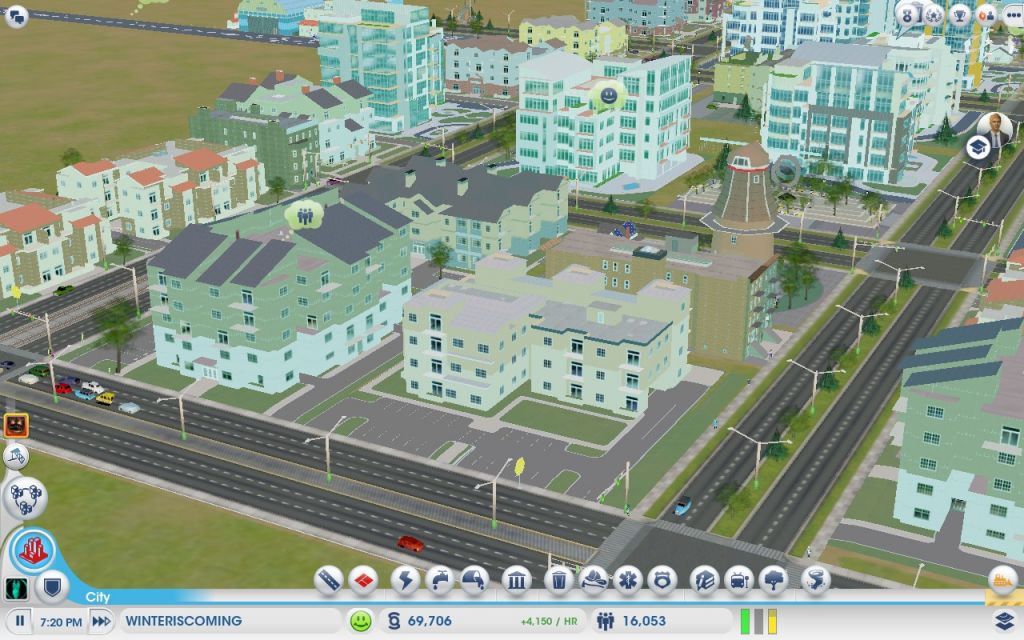
I even applaud Maxis for integrating multiplayer into SimCity, and for doing it in such a way that it almost works. It should work, in fact, and sometimes it really does. The fact that it comes so close probably hurts it worse than if it was so broken that players found something to like about that misery. While I have no advice in mind about what improvements can be made immediately, I can for certain say that I’m baffled by the complete lack of an offline or even a LAN mode.
A previously cherished single-player experience, I can’t think of anything that would break the design of this SimCity if it were offline. As cities perform a sync before closing out of the game, I don’t see why that file isn’t available to players to play offline and updated to a newer save-state when they return. Cities seem to be operating at some persistent level that doesn’t break them when players are inactive, so forcing players to always be online doesn’t rule out for me as a necessity on the game’s behalf.
The final issue here isn’t launch week, or the time of writing, or whenever you read this, but when a decade later the servers aren’t up anymore. We’ll still be able to play every SimCity game leading up to this, but at the rate that this new installment has been littered with small disappointments, maybe nobody will miss it when the time comes to shut it down.
Without knowing how to kindly usher an old friend back out of town because you realized they kind of suck now, I also don’t know how I’m supposed to review an ever-changing product that is still having a lot of bad days along with some good ones. It may get up to speed eventually, and we may even get an offline mode, but my main takeaway is that SimCity has taught me how disposable I am as a player, and how imaginary my progress and data can be at any time.
When playing my first few hours, I was asked by my girlfriend how this game was different than any Facebook or iOS game, and I had a hard time separating the two. Maybe Facebook games allow for larger cities. There is magic here, but after hitting the ceiling so often I can’t recommend this game to many people without a list of caveats to warn them first. It’s gorgeous, and a time sink, but the more you come to understand it, the less you wish you knew.


